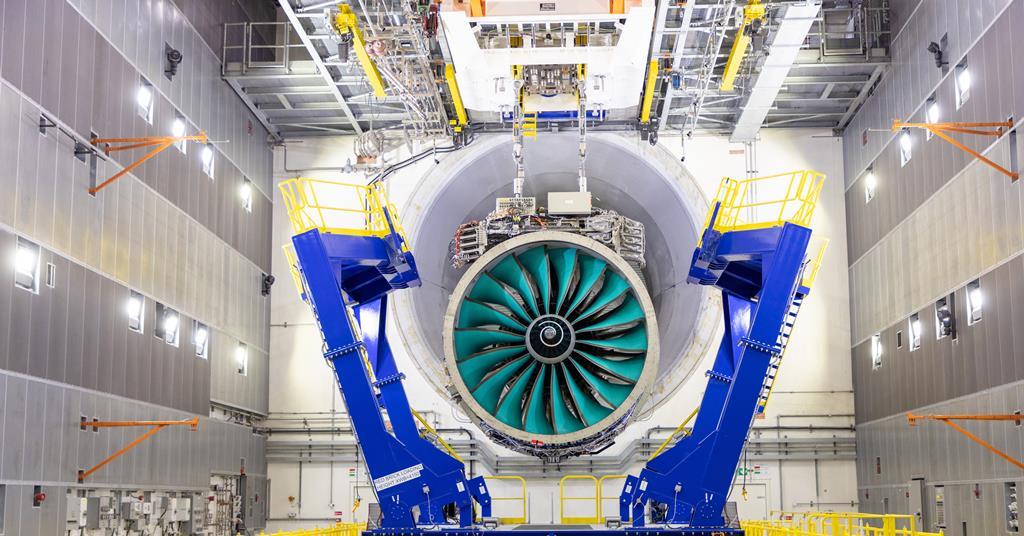New details have emerged of the Rolls-Royce-led Ultra Novel and Innovative Fully Integrated Engine Demonstrations (Unified) UltraFan test program aimed at ground testing of a mid-thrust class technology demonstrator for future narrowbody aircraft.
One of
12 new research and technology projects awarded recently under Europe’s Clean Aviation Joint Undertaking’s latest €945 million ($1.1 billion) round, the Unified initiative will also “enable the preparation of key activities toward future flight test of the UltraFan architecture,” Rolls-Royce says.
Other Clean Aviation propulsion projects in the ultra-efficient short- to medium-range aircraft sector—likely to help the development of an Airbus A320 successor—include a Safran-led open fan test project under the Take Off (Technology And Knowledge for European Open Fan Flight) program. Take Off will contribute to Safran’s joint RISE (Revolutionary Innovation for Sustainable Engines) project with GE Aerospace. Airbus will also lead a project on a hybrid-electric architecture.
All the projects form part of Clean Aviation’s overall goal of cutting greenhouse gas emissions 30% at aircraft level by 2035. Projects are due to officially begin in early 2026 and culminate with flight tests planned for 2028-2029.
The timeline aligns with Rolls-Royce’s current small UltraFan 30 development plan which is aimed at the broad 30,000 lb.-plus thrust range expected for the Next Generation Single-Aisle (NGSA). Paired with Unified, the UltraFan 30 initiative fulfills a strategic goal unveiled by Rolls CEO Tufan Erginbilgic in late 2023 which targets a return to the narrowbody sector, which Rolls effectively abandoned 13 years ago with the sale of its shares in the International Aero Engines collaborative venture to Pratt & Whitney.
Unified builds on earlier design work for a smaller UltraFan conducted under Heaven (Hydrogen Engine Architecture Virtually Engineered Novelly), another Clean Aviation project. The geared design with a variable pitch fan system is designed to power both narrow- and widebody aircraft and improve fuel efficiency by 25%, and Heaven was focused primarily on scaling down the technology tested for the first time on a full-scale Rolls demonstrator in 2023.
Commenting about the smaller UltraFan plan at the
Paris Air Show in June, Simon Burr, Rolls-Royce Group Director of engineering, technology and safety, said, “we’ve got a great new core on the Pearl 10X, but the demonstration is really about demonstrating the low-pressure system.”
Although ground tests are provisionally targeted for 2028, Burr is challenging his design team to accelerate this to 2027. “We think by 2028 you’ve got to be able to show something, not just arm waving and PowerPoint,” he added.
With a potential fan diameter of “well over 90 in.,” Burr also said part of the initiative is aimed at overcoming the installation challenge. “You can slim the nacelle down, so there’s a lot of work being done on that as well as shorter nacelles, reducing the overhung mass, the wetted area, and all the drag interference,” Burr said. “There’s a lot of optimizations still to come in that space and it’s interesting engineering.”

